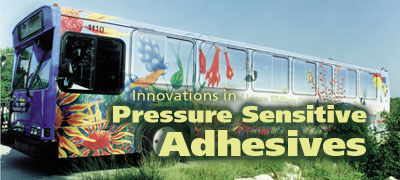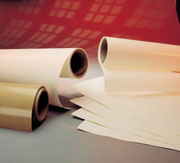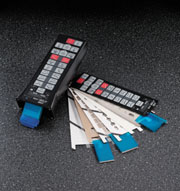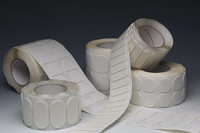
While pressure sensitive adhesives suppliers may know their customers' needs, understanding the needs of their customers' end users is just as important. By focusing on converting and application requirements, adhesives suppliers can broaden their offering potential, as well as their profits.
It may be useful to begin by differentiating the meaning of the term "end user" as it relates to this discussion. While an adhesives supplier may regard its customer as the end user, that customer has a very different point of view. To him, the end user refers to the company supplying a consumer with a finished product. For example, an adhesives supplier may sell products to a company that produces label stock. To the adhesives supplier, the label-stock company is the end user, and the label-stock company may regard a specific consumer-goods manufacturer as the end user. However, all parties involved understand that the consumer is the true end user and that product design must begin and end with the consumer in mind.
This means that an adhesives supplier may only be aware of a fraction of the ultimate end-use requirements. For example, an adhesives supplier may sell the film supplier an adhesive that features excellent adhesive properties (tack, peel and shear). However, the product may ultimately be selected because of its ability to dampen sound and vibration. In this case, the adhesive may be intended for use as part of a constraint layer (adhesive sandwiched between two rigid substrates). It may also need to withstand grueling environmental conditions, such as high heat and chemical exposure. Perhaps the adhesive will be used as part of an automobile's disc brakes or in a computer's hard-disk drive. In fact, the adhesive properties may only be an afterthought.
Looking at examples from market segments such as packaging, transit advertising and membrane switches can help highlight the range of possibilities open to pressure sensitive adhesives suppliers. By collaborating with their customers and end users, adhesives suppliers can develop innovative products and approaches to expand their offerings and their revenues. Successful adhesives manufacturers are willing to work with new materials that better meet end-use application needs, rather than trying to "force fit" materials that do not.
Creating Superior Package Decoration
Over the past decade, the no-label look has exploded within the glass-bottle beverage market. Manufacturers of non-alcoholic beverages (NABs, such as SoBe and Snapple), beers (such as Coors) and flavored alcoholic beverages (FABs, such as Smirnoff Ice), are choosing pressure sensitive film to create a high-end look.However, this technique for package decoration was virtually non-existent until the late 1980s. At the time, designers of beverage labels were searching for a new look that would allow them to move beyond paper. The revolutionary product turned out to be a relatively unknown flavored-water beverage named Clearly Canadian.
The goal sounded modest: develop a label that would simulate the look of applied ceramic labeling (ACL) on a clear glass bottle. If the supplier of film stock had approached the adhesives supplier and asked only to match a clear adhesive with a clear-film substrate, he or she might still be struggling to find the right combination.
However, the suppliers of adhesive and label stock worked closely together with the converter from the very beginning and quickly identified a long list of challenging end-use requirements. Although everyone understood that the container would be a glass bottle, the other issue was that the bottle was uniquely shaped with the tight radii of the neck portion of the bottle quickly flaring out to a wider curved surface near the base.
While the need for a clear adhesive may have seemed obvious, the conditions under which this clarity needed to be maintained were not. Once affixed, the labels were required to withstand the abrasion and clattering associated with transportation. The label also needed to endure the cold temperatures of a store freezer and possibly a water-soaked ice chest. At the time, such conditions caused many clear adhesives to cloud or whiten, creating an unattractive "ghosting" effect.
In the case of Clearly Canadian, the film and adhesive developments occurred as part of a collaborative effort. Looking at the requirements, the adhesives supplier developed an ultra-clear, permanent acrylic adhesive that offered excellent "wet out" characteristics. This meant that once applied to the bottle, the adhesive flowed out evenly and completely, enabling the film/adhesive combination to create a smooth seal to the bottle. This eliminated any unattractive appearances due to bubbles or air pockets found trapped beneath the label.
Perhaps the biggest challenge was to ensure that the clear labels would meet the challenges associated with automatic dispensing. Throughout the 1980s, glue-applied labels were a popular choice for many bottle labelers due to the ease of dispensability. Over the last decade, thanks to numerous trials and extensive collaboration, pressure sensitive adhesives have revolutionized the process. Today, film labels can be dispensed at a rate of upwards of 400 labels or more per minute.

Pharmaceutically Speaking
The success of the no-label look in the beverage-labeling market showcases a specific type of aesthetic and performance consideration. In the case of ethical pharmaceutical labeling, adhesives suppliers need to understand a very different range of end-use requirements.Virtually every pharmaceutical bottle, vial or ampule features some sort of labeling. The same appearance issues noted in beverage labeling must also be considered here. In addition, pharmaceutical manufacturers must meet stringent FDA regulations. It is even more critical that these labels remain affixed and legible, as they often carry important medical information. The labels must adhere to extremely tight radii and remain intact without flagging.
Adhesives suppliers looking to break into this growing market must understand these requirements early in the development process. In addition, they need to be aware that many pharmaceutical adhesive/film combinations must also withstand the intense heat of the autoclave process, which is used for sterilization purposes. Thus, a general-purpose clear adhesive may not provide the necessary level of performance. In addition, there has been a trend within the ethical pharmaceutical market toward high-speed dispensing. This means that the labeling must track well and offer excellent on-press registration. The combination of a high-performance liner and an adhesive that exhibits the best balance of shear, tack and peel characteristics can make a significant difference in this regard.
An informed adhesives supplier may also be able to help solve additional challenges associated with pharmaceutical labeling. For example, photo-luminescent additives are available, which can provide pharmaceutical manufacturers with an in-line verification tool.
Here, the clear label/adhesive combination is applied to a bottle, syringe or ampule as it passes through the filling station. At the end of the line, an electronic scanner "searches" for the photo-luminescent additive by flashing an ultraviolet light. If the additive is present, it will show up through the clear label, and the bottle will continue to the shipping area. If the additive is not present (presumably because the label has not been applied properly), the bottle will be "kicked out" of the line. This process enables the pharmaceutical manufacturer to offer 100% verification in line, ensuring that all pharmaceuticals are properly labeled before they are sent out to hospitals, clinics and store shelves.
A photo-luminescent additive can also function as a tool to identify counterfeit products. In one case, a company equips its agents with hand-held ultraviolet lights. The representative then visits stores, checking the company's product with the light. If the product is authentic, the adhesive along the edge of the label will "glow" under the UV light. If there is no trace of the additive, there will be no glow and the representative can identify the product as a counterfeit.
Tremendous Opportunities in Transit Advertising
According to several industry trade publications and associations, the transit advertising market has been growing exponentially in the United States during the past decade. Buses, cars and subways now sport pressure sensitive film advertisements. These vehicle "wraps" require that the conformable film substrate be backed with a durable adhesive that offers easy application and the ability to be removed in the field. This has driven suppliers of pressure sensitive adhesives and films to develop new systems that meet the challenges associated with this rapidly expanding market.Again, it is critical to examine all of the associated challenges at the outset. Beyond adhering dozens of square feet of film substrate to a painted, contoured metal surface, the adhesive may also need to provide other characteristics. For example, will the substrate be printed via conventional print technologies or via wide-format digital? Will the product be sent in roll or sheet form? These factors play a role in selecting the best adhesive.
While an aggressive permanent adhesive may seem like the best first choice, the adhesive must also allow the graphic to be repositioned during the application process. Because of their size, these graphics need to be lined up and applied carefully, much like enormous sheets of wallpaper. Another important criteria is that the adhesive must be cleanly removable when the promotion has ended, ensuring that the vehicle is not damaged. These advertising messages change frequently; so all parties require that the application and removal processes take place in the field, minimizing the time that the vehicles are out of service.
The adhesive challenge is further complicated by the fact that the adhesive and film will be exposed to the same range of grueling outdoor conditions that the vehicle encounters on a daily basis: freezing ice, high humidity, extreme temperatures, intense UV rays and harsh chemicals. The adhesives supplier should also know the geographic area where the product will be used. The adhesive that works well in the arid Southwest may not be suitable for the muggy Southeast or the bitter cold of the Northeast. These issues will dictate whether or not the adhesive may need to be tweaked to function in specific environments.
Adhesives suppliers are a crucial link in the development process, offering advice and suggestions as to the best combination of adhesive characteristics and durability requirements. The development of products such as FLEXcon's BUSartT for full bus wraps is a result of this collaborative spirit. In fact, its development helped spark the creation of SEETHRU-SIGNR Flex, a perforated, one-way graphic film substrate that can be applied to windows utilizing a low-tack adhesive.

Making the Most of Membrane Switches
From the control pad on a microwave to the remote control for a hospital bed, membrane switches can be found everywhere in our day-to-day lives. These switches must meet an extensive list of criteria before being put in the field. In addition to enduring thousands of actuations during their life spans, they must often withstand moisture, boiling fluids and harsh chemicals.Membrane switches are a multilayer construction, consisting of conductive, dielectric and adhesive polymers. This "sandwich" of components must adhere together with an aggressive, permanent adhesive. The membrane switch is required to provide superior mechanical properties (essential for long-term performance) and to not delaminate in the field.
In the mid-1990s, FLEXcon collaborated for two years with a renowned membrane-switch manufacturer and an adhesives supplier to create SWITCHmarkR. This line of high-performance spacer components and laminating adhesives is specifically engineered for demanding membrane-switch applications. The product is designed to offer high performance under a wide range of conditions and meets the UL 746C requirement for polymeric adhesive systems used in electrical equipment.
Focusing on the adhesive, switch manufacturers require a product that takes into account the complexity of a membrane-switch layout and makes the most of the limited adhesive "real estate." It needs to be compatible with a variety of switching mechanics, such as polyester domes, metallic domes and flat switches. In addition, switch manufacturers require a product that can be repositioned within the first few minutes of application. This allows manufacturing personnel to correct errors that would otherwise result in the scrapping of an expensive switch. In this area, it is critical that the tack of the adhesive remain consistent from lot to lot.
The adhesive must bond well to a variety of surfaces, including printed circuit boards, a variety of surface metals, print-treated and untreated polyester, and polycarbonate and other plastics. In addition, it must be compatible with a wide range of dielectric, decorative and conductive inks. UV inks, in particular, can pose a challenge for many adhesive systems.
The adhesive plays a critical role in the integrity of the switch. It must exhibit excellent shear characteristics. SWITCHmark features built-in elasticity, which promotes superior bond retention as the switch cycles through thousands of actuations in the field. Durability is also a factor. The adhesive bond must resist heat, moisture and exposure to chemicals, especially when being used as a component in medical equipment.
Switch manufacturers take these requirements into consideration at the early stages of design. They have designed tests to evaluate the cohesive properties, bond strength, temperature performance and chemical resistance. This helps ensure that the adhesive meets specifications long before the switch is assembled.
For example, one membrane-switch manufacturer was contracted to create a remote control for hospital beds. The remote was subjected to an intensive battery of tests, including repeated actuations, full submersion in cleaning chemicals and exposure to bodily fluids. Another switch was designed for a coffee vending machine. In this case, the switch was constructed to endure the scalding hot temperature of the coffee. In each test, the adhesive played a vital role.
Communication Is the Key
The ultimate success of these seemingly different projects hinged on collaboration and communication. In each case, the adhesives supplier worked closely with the film manufacturer, converter and end user, asking questions and developing adhesives that met specific requirements. By being involved in every stage of the development process, the adhesives supplier was able to anticipate needs and meet expectations.This ability to appreciate the "big picture" has enabled certain adhesives suppliers to transform challenges into opportunities. But these success stories do more than highlight a handful of companies; they showcase how communication has helped increase the use of pressure sensitive adhesives across various industries. By listening to needs and responding with options, each of us can expand our market share, as well as the market as a whole.
FLEXcon is a worldwide manufacturer of pressure-sensitive films and adhesives for a variety of applications ranging from membrane switches and industrial bonding to product identification and primary labeling to transit advertising and P-O-P graphics. This article is based on a presentation made at the Spring 2002 Adhesive and Sealant Council Meeting in Beverly Hills, Calif. For more information, contact FLEXcon, 1 FLEXcon Industrial Park, Spencer, MA 01562-2642; phone 508-885-8200; fax 508-885-8400; or visit www.FLEXcon.com. Chris Drury can be reached at 508-885-8253 or cdrury@FLEXcon.com. Or Circle No. 70.
